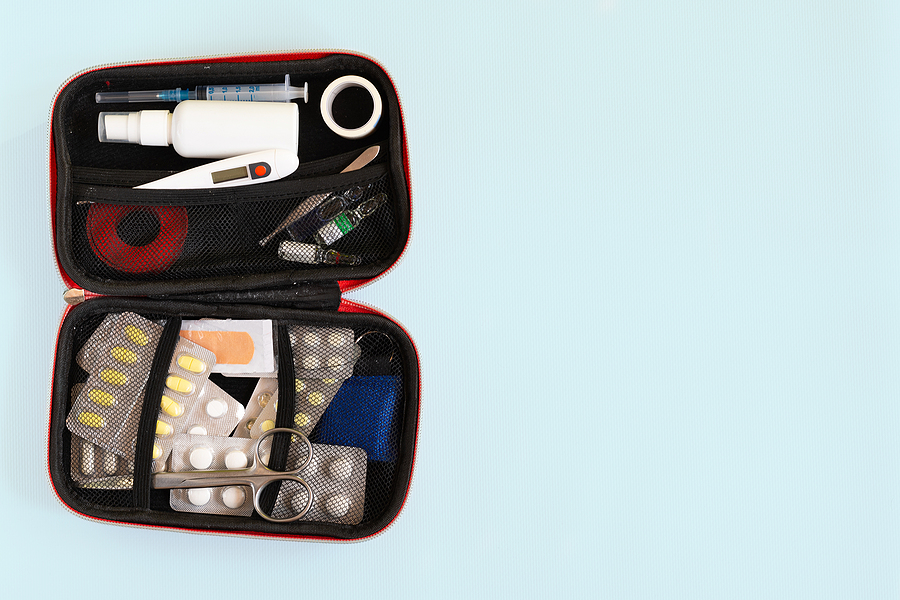Whether you’re driving around town, taking a weekend trip, or heading across the country, having a ready-to-use and well-stocked first aid kit is one of the best ways you can prepare for an emergency. Many people don’t carry first aid supplies with them because they believe that having a cell phone is good enough. It’s not.
You can patch up many minor injuries quickly without having to call emergency services. A first aid kit can also be a life-saver while you wait for help to arrive or bad weather to pass. Not sure how to put together an auto first aid kit? Here’s what you need to know:
1. Purchase or Find a Box for Your First Aid Items
If you’re going to have a first aid kit that will stand the test of time traveling in your vehicle, you need a good container. Instead of tossing everything into a bag, look for a hard-sided box or something durable that zips closed. Avoid locking it in case you need to access items inside in an emergency.
2. Put Your First Aid Kit Together
Once you have your container, it’s time to fill it up with items you might need in an emergency. Some of the essential pieces you should include are:
- Band-aids of different sizes
- Antibiotic ointment
- Gauze pads and tape
- Antiseptic wipes
- Insect bite relief pads
- Cotton balls & swabs
- Vaseline
- Tweezers & scissors
- Thermometer
- Antihistamine, aspirin, and ibuprofen
- Aloe vera gel
- Saline solution
3. Include Infant- and Child-Sized Versions
If you have young children or have additional space in your kit, it’s always a good idea to include some additional items that are meant for them. A few examples are infant and child pain relievers, Benadryl spray, baby wipes, and small bandages.
4. Be Prepared for Serious or Life-Threatening Situations
While most first aid kits will help you address minor injuries such as cuts, scrapes, and burns, some accidents and injuries can be severe. You can be prepared to help someone in an acute emergency like choking, drowning, cardiac arrest, and severe allergic reactions. Some additional items you might want to carry include:
- CPR mask
- Hot and cold packs
- Epi-pen
- Synthetic gloves
- Anti-diarrhea medication
- Emergency blanket
5. Include Some Simple Instructions in Your Kit
Finally, not everyone has first aid training or can remember what to do when faced with an emergency. It would be a good idea to include a simple “cheat sheet” or small instruction book with your first aid kit. This can remind you about what you should and shouldn’t do under various conditions to help someone that has been injured or is suffering a medical emergency.
Being prepared is the best way to avoid an unnecessary trip to the emergency room, and it can even save a life. At MedTrust, we provide non-emergency patient transportation services throughout South Carolina and parts of North Florida. Our goal is to improve patient outcomes through excellence in mobile healthcare.
Contact us to learn more about our services or find out how you can join our team.

